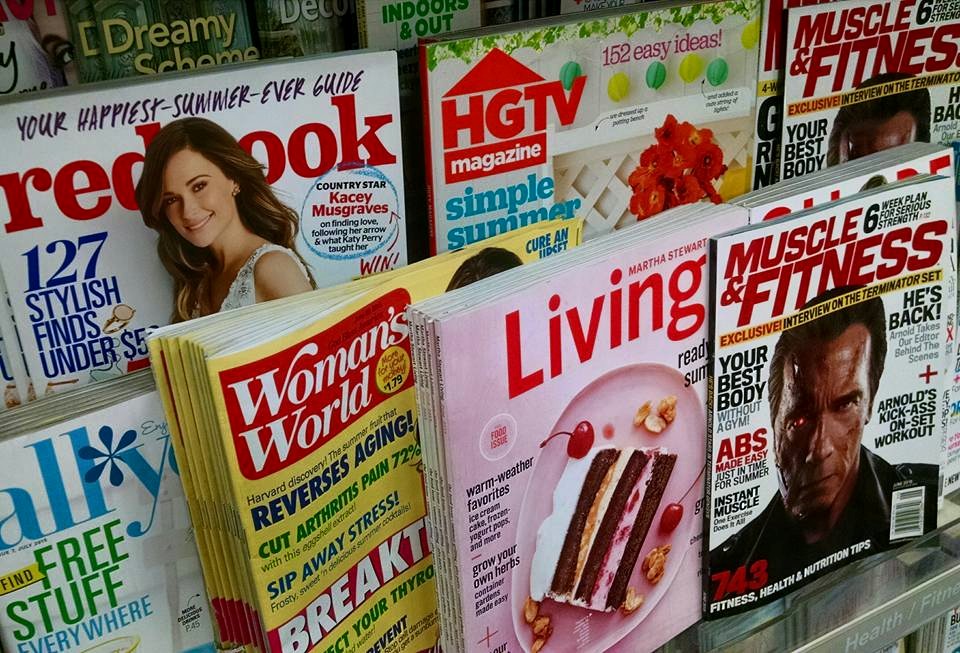As a former magazine editor and someone who has written for many publications, I’ve got good news. Every magazine editor is always looking for the right material for their magazine. Even if you are getting rejected, you should be encouraged with this information. Magazine editors (like book editors) have many more responsibilities than simply reading unsolicited manuscripts. Most of the higher paying magazines prefer to receive a single-page pitch letter called a query letter. Within a few minutes, the editor can determine if the idea is appropriate or not for their publication. Because of the volume of submissions, many editors will never respond if the answer is “no thank you.” Just knowing this practice is a reality check for writers.
As a writer, you are looking for an assignment or a “go ahead” or a “yes” response from the editor. One of the most important skills for writers to develop is to craft a query letter. To succeed at writing queries requires repeated practice. As you write these letters, you will refine and improve your technique. Sometimes at writer’s conferences, I will teach an hour on this topic and give detailed examples and a checklist in my handouts. I continue to recommend Lisa Collier Cool’s excellent book, How to Write Irresistible Query Letters (Writer’s Digest Books).
What’s a query letter? A query is a single-page letter which sells your story idea. It has a four paragraph formula.
The first paragraph is a creative beginning for your article. You don’t write the entire article–only the first paragraph which captures the reader’s interest. The purpose of this first paragraph is simply to capture the editor’s attention. I won’t walk you through the day of an editor, but since I’ve been one for years, I know they are involved in a multitude of tasks. For editors to read query letters, it is often done at the end of the day, late at night or in a car pool on the way home. You must begin with something interesting.
The second paragraph includes the main points of how you will approach the article.
The third paragraph gives your personal qualifications for this topic and your writing credits (if any). It answers the question, why should you of all the writers get this assignment? Highlight your area of expertise in this paragraph.
The final paragraph says how soon you could write the article (give yourself enough time for example, “three weeks from assignment”) and says you are enclosing a self-addressed, stamped envelope and looking forward to their reply or they respond via email. I often send my query letter to as many as ten different publications at the same time.
Within the magazine business, there is an on-going discussion about simultaneous submissions (where you send the same finished article to several publications). If you do this, you may end up on the black list of authors. Each publication has a list of people that they will not work with. You don’t want to be on that list. Also each publication has a list of authors they use regularly and call with ideas. Your goal is to get on this particular list of regular contributors.
A simultaneous query is not the same as a finished article. Go ahead and query several magazines at the same time on the same topic if you think you can write several different articles on the same subject. One magazine may ask for 500 words on the topic while another may approach it from an entirely different viewpoint and ask for 2,000 words. Your illustrations and information will be considerably different. If you send it to ten magazines, you may get ten rejections. On the other hand, perhaps you will get an acceptance or two, or at least a request to see the entire article on speculation. “On speculation” means that the editor is not under obligation to purchase your article if it doesn’t meet the periodical’s standards or expectations.
A word about rejection of your queries and manuscripts
An article or query may be rejected for many different reasons. Maybe the publication has already purchased an article on that topic. Maybe they’ve recently assigned it to another author. Maybe they have an article on that topic coming in an issue which is already in production but not printed. There are many different reasons for rejection which are out of your control as a writer.
Sometimes even out of rejection comes an assignment. Several years ago, I had queried a number of magazines about writing on listening to the Bible on tape. I targeted the January issues of publications for this short how-to article. Every magazine rejected it.
Several weeks later, I received a phone call from a new editor at Christian Life magazine. They too had rejected the idea earlier. “We’re sorting through some old queries,” she explained. “Would you be able to write 500 words on the topic in the next three weeks?” No problem. That little article turned into one of my most popular articles for reprint in other publications.
I prefer writing on assignment and you can snag magazine assignments as you learn how to write a riveting query letter. You want the editor to read your letter and be compelled to pick up the phone and call you for more information or an assignment. Or you want that editor to open an email and write you immediately asking when you can have the article ready for their magazine. I hope you can see the importance of this skill as a writer.
Because I’ve been published repeatedly in different magazines, many mistakenly believe I was born this way. Wrong. I garner my share of rejection in this process.
Years ago in college I took a magazine writing course. We were required to write several ten-page magazine articles. My key mistake was a lack of understanding of the market or the audience for the publications. When you write your query letter, you have to focus on both of these aspects. You want the idea to be perfect for that particular publication and you want to think about the publication’s audience when you write the query. If you don’t handle these two basics, then I can almost guarantee rejection. My writing and my research for the college articles was right on target—yet these articles were never published because they had no market or audience in mind. Don’t make that same mistake.
- Terry Whalin, a writer and acquisitions editor at Morgan James Publishing, lives in Colorado. A former magazine editor, Whalin has written for more than 50 publications including Christianity Today and Writer’s Digest. He has written more than 60 nonfiction books including Jumpstart Your Publishing Dreams. His latest book is Billy Graham, A Biography of America’s Greatest Evangelist and the book website is at: http://BillyGrahamBio.com Watch the short book trailer for Billy Graham at: http://bit.ly/BillyGrahamBT His website is located at: www.terrywhalin.com. Follow him on Twitter at: https://twitter.com/terrywhalin









No Comments